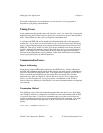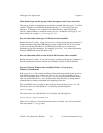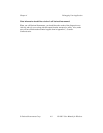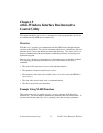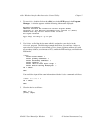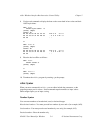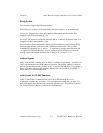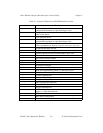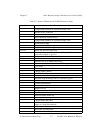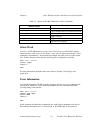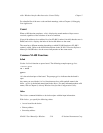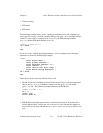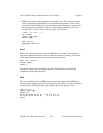Chapter 5 wibic–Windows Interface Bus Interactive Control Utility
© National Instruments Corp. 5-5 NI-488.2 User Manual for Windows
String Syntax
You can enter strings in the following formats.
ASCII character sequence–You must enclose the entire sequence in quotation marks.
Octal bytes–You must use a backslash character followed by the octal value. For
example, octal 40 is represented by \40 .
Hex bytes–You must use a backslash character and an x followed by the hex value. For
example, hex 40 is represented by \x40 .
Special Symbols–Some instruments require special termination or end-of-string (EOS)
characters that indicate to the device that a transmission has ended. The two most
common EOS characters are \r and \n . \r represents a carriage return character and
\n represents a linefeed character. You can use these special characters to insert the
carriage return and linefeed characters into a string, as in "F3R5T1\r\n".
Address Syntax
Many of the NI-488.2 routines have an address or address list parameter. An address is a
16-bit representation of the GPIB address of a device. The primary address is stored in
the low byte and the secondary address, if any, is stored in the high byte. For example, a
device at primary address 6 and secondary address 0x67 has an address of 0x6706. A
NULL address is represented as 0xffff.
wibic Syntax for NI-488 Functions
Table 5-1 and Table 5-2 summarize the syntax of NI-488 functions in wibic.
v represents a number that you input. string represents a string that you input. For
more information about the function parameters, use the wibic help feature or refer to
the NI-488.2 Function Reference Manual for DOS/Windows.



